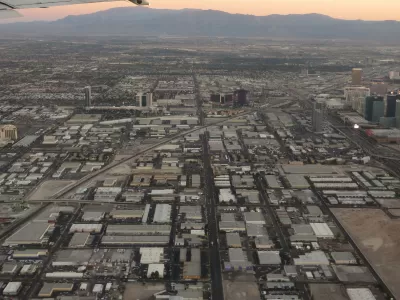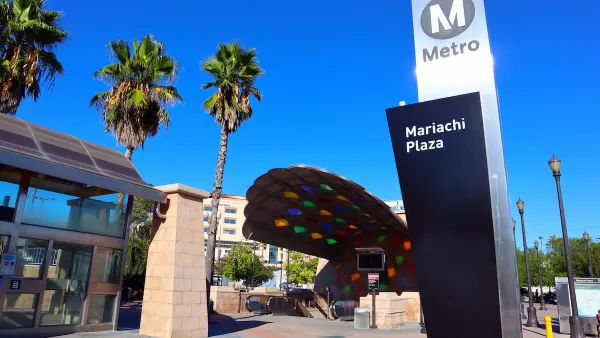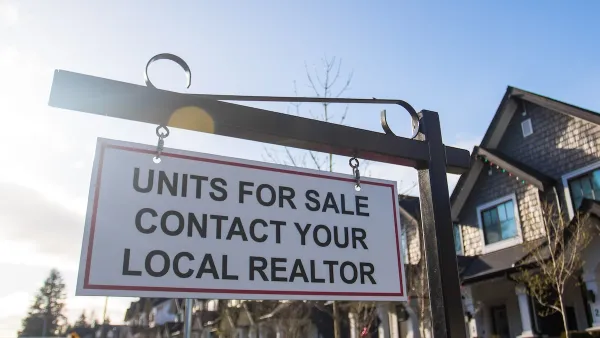As Las Vegas focuses attention on the city's West Las Vegas neighborhood, residents worry about possible displacement.

As a new round of planning charrettes launches with the goal to "inject new life" into the ailing West Las Vegas neighborhood, the large African American community that calls the neighborhood home is wary of yet another planning exercise that could potentially bring gentrification and displacement to the community. Writing in Landscape Architecture Magazine, Nate Berg reports that many of the area's residents have participated in previous planning charrettes but nothing had come out of them. UNLV's Steven Clarke, who is leading the process, notes that since 1996 there have been four previous studies of the area, but the reports generated little action. The city of Las Vegas is hoping to revitalize the area with new businesses and increased pedestrian activity—the area currently includes some 200 vacant parcels and a main commercial strip that resembles "a ghost town."
However, with improvements comes the possibility of displacement which has some residents concerned.
Beyond the overarching suspicion about the planning process, the community was especially concerned about any approach that would undo or push out the neighborhood’s African American heritage.
“We don’t want our history killed. We don’t want the blood, sweat, and tears that had gone into what made our community great erased,” says Shondra Summers-Armstrong, who’s lived in the community since the 1990s. “We know things change. We’re pretty okay with that. We know it’s not going to be the same as it was. But no one wants to be erased. No one.”
The charrette team, which included UNLV students, put their findings and recommendations together in "The HUNDRED Plan for the Historic Westside Community," which was released in January 2016. The plan provided multiple recommendations, including mixed-use development along the neighborhood's corridors and edges and the development of complete streets. The HUNDRED plan was included as part of the city's 2035 Downtown Master Plan document that was released in June, which will see the rezoning of parts of the neighborhood required to bring the community's visions to reality.
FULL STORY: Wary of Change

Planetizen Federal Action Tracker
A weekly monitor of how Trump’s orders and actions are impacting planners and planning in America.

Restaurant Patios Were a Pandemic Win — Why Were They so Hard to Keep?
Social distancing requirements and changes in travel patterns prompted cities to pilot new uses for street and sidewalk space. Then it got complicated.

Map: Where Senate Republicans Want to Sell Your Public Lands
For public land advocates, the Senate Republicans’ proposal to sell millions of acres of public land in the West is “the biggest fight of their careers.”

Maui's Vacation Rental Debate Turns Ugly
Verbal attacks, misinformation campaigns and fistfights plague a high-stakes debate to convert thousands of vacation rentals into long-term housing.

San Francisco Suspends Traffic Calming Amidst Record Deaths
Citing “a challenging fiscal landscape,” the city will cease the program on the heels of 42 traffic deaths, including 24 pedestrians.

California Homeless Arrests, Citations Spike After Ruling
An investigation reveals that anti-homeless actions increased up to 500% after Grants Pass v. Johnson — even in cities claiming no policy change.
Urban Design for Planners 1: Software Tools
This six-course series explores essential urban design concepts using open source software and equips planners with the tools they need to participate fully in the urban design process.
Planning for Universal Design
Learn the tools for implementing Universal Design in planning regulations.
Heyer Gruel & Associates PA
JM Goldson LLC
Custer County Colorado
City of Camden Redevelopment Agency
City of Astoria
Transportation Research & Education Center (TREC) at Portland State University
Camden Redevelopment Agency
City of Claremont
Municipality of Princeton (NJ)





























